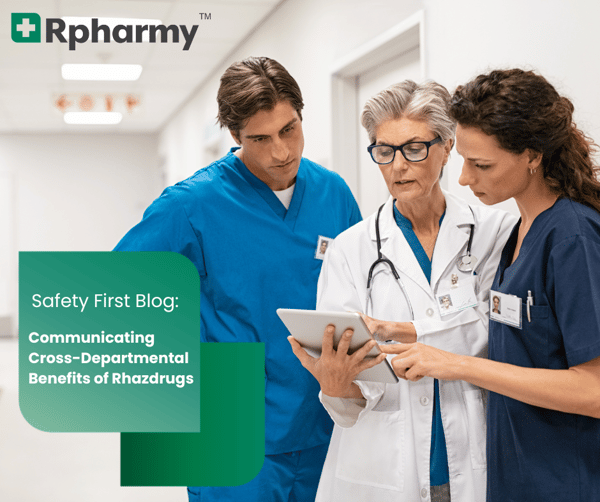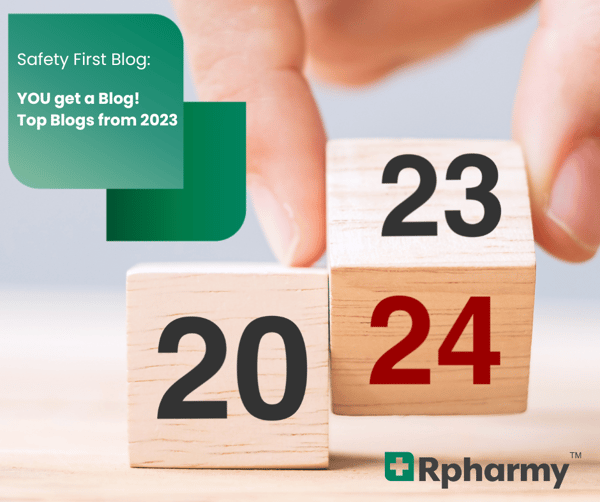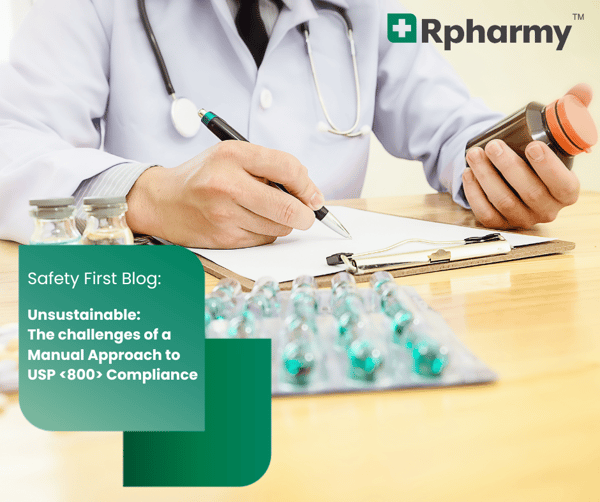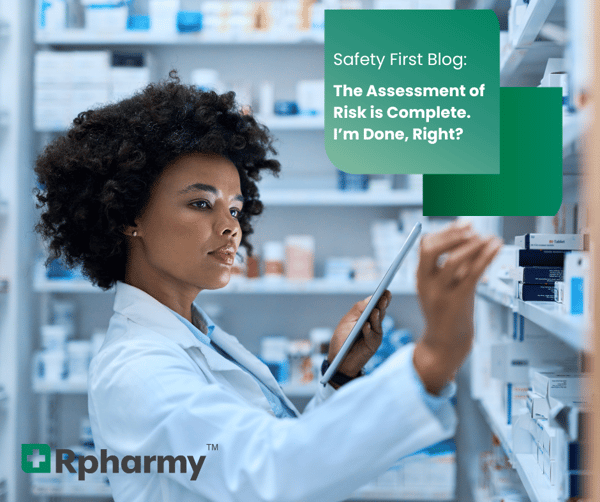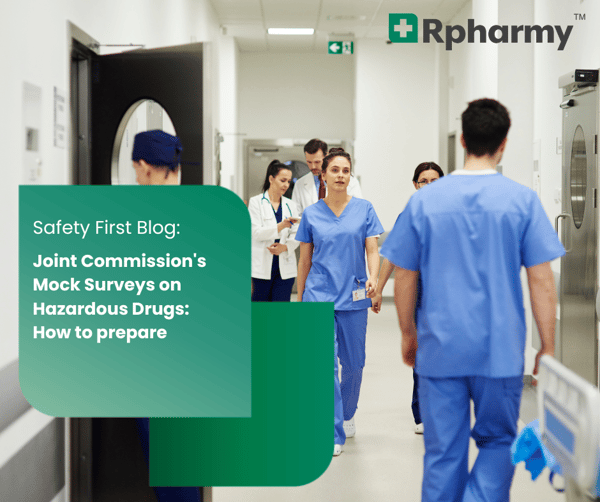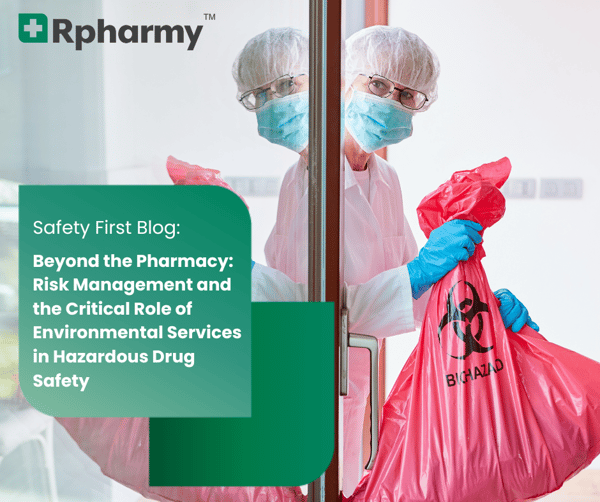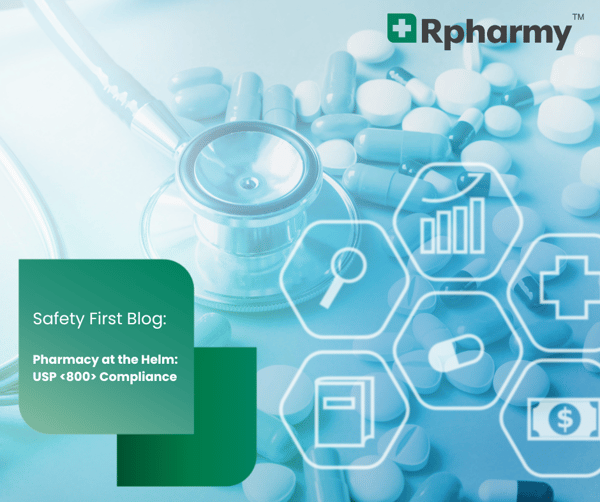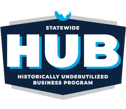To our long-time Rpharmy supporters and new acquaintances alike, we express our heartfelt gratitude for your continued trust and partnership. As our network has grown through recent events, online encounters, and customer referrals, we realize it's time to re-introduce the driving force behind our work. Plus, we have some exciting updates about our team to share with you. Read on!
The Future of Rpharmy: Building a Legacy of Safety in Healthcare
Implementing Rhazdrugs: Resources for Communicating Cross-Departmental Benefits
USP <800> compliance requirements touch a variety of healthcare leaders, professionals and departments across a vast and sometimes siloed healthcare system. This is made more complicated and challenging by the fact that USP <800> itself requires physical changes, equipment upgrades, and also many cultural changes across the system.
Much like Oprah’s Favorite Things list, our blogs are gifts that keep on giving… YOU get a blog, YOU get a blog, YOU GET A BLOG! The blogs we selected to share here were not only the most popular throughout the year but also offered helpful information on various topics related to USP <800>, formulary, medication safety and patient and healthcare worker safety. Basically, if you read nothing else this month, check out these blogs. Be sure to let us know what’s on your mind for 2024, and we’ll work to cover it in a future blog.
Unsustainable: The challenges of a Manual Approach to USP <800> Compliance
In blog #3 of our series about how hospitals are working to meet USP <800> compliance with little to no budget, we’ll share more challenges hospitals have faced as they attempt to piecemeal a homegrown USP <800> hazard communication program together vs. investing in a comprehensive technology solution.
The Assessment of Risk is Complete. I’m Done, Right?
In blog #2 of our series about cost-cutting measures hospitals are taking in order to comply with USP <800>, we’ll discuss another area hospitals are trying to address manually - Assessments of Risk.
Is Your USP <800> Hazardous Drug Solution Really Free?
The effort to comply with USP <800> is time and resource-intensive, requiring significant investments in workflow shifts, and technology upgrades. Many hospitals we’ve spoken with did not have an upfront budget to meet the many hazardous drug safe handling requirements of USP <800>, <795> and <797> and must dedicate large sums to new equipment, PPE and even major building renovations to meet new, stringent compounding requirements.
Joint Commission's Mock Surveys on Hazardous Drugs: What to Expect and How to Prepare
This week at the ASHRM (American Society for Healthcare Risk Management) 2023 Conference, we learned that the Joint Commission is conducting mock surveys around hazardous drugs to prepare hospitals and healthcare systems for upcoming accreditation surveys.
Beyond the Pharmacy: Risk Management and the Critical Role of Environmental Services in Hazardous Drug Safety
Healthcare risk management is an all-encompassing concern. As we’ve mentioned before, as a risk manager, you are tasked with protecting patients, healthcare workers, and the facility or system from the many potential risks healthcare organizations face.
University Hospitals: What We Learned During the Implementation of Rhazdrugs
As hospitals implement Rpharmy’s Rhazdrugs solution to help comply with USP <800> and prevent healthcare workers from exposure to hazardous drugs, many have uncovered areas where further safety information or education is needed during the process. University Hospitals in Ohio is one hospital we’ve worked with recently to implement Rhazdrugs.
University Hospitals’ Medication Safety Officer, Bridget Gegorski, oversees medication safety programs for the 21 integrated hospitals within the system, which includes the implementation of Rhazdrugs and compliance with USP <800> and the lengthy list of state and federal regulations.
Manual to Automated
Prior to Rhazdrugs, hazardous drug safety information was documented and shared via a spreadsheet on the hospital system intranet. Not only was it difficult to find for nurses and clinicians, not to mention environmental services, but it was challenging to maintain.
Transitioning from manual spreadsheets to an automated system has revolutionized our hazard drug safety management process. Rhazdrugs not only streamlines the process but also fosters collaboration, said Bridget.
More involvement = Stronger Safety Protocols
Previously, hazardous drug safety management was mostly a solo effort, often resting on Bridget. The limitations of using a spreadsheet on a shared drive restricted simultaneous work and was focused on the addition or removal of drugs. Comprehensive reviews were challenging because all of the change control landed on one person.
Now, Rhazdrugs’ automated system allows multiple stakeholders, including our oncology medication safety officer, the clinical oncology manager, the operations oncology manager, and the oncology director, to collaboratively edit and approve changes. With five individuals now sharing the workload, the reviews are more in-depth and proactive. This shift doesn't only distribute responsibility but ensures a richer and more thorough assessment of safety protocols.
Greater End-User Awareness
The cornerstone of hazardous drug handling is ensuring that end-users are aware and have consented to the potential risks involved. This can be compared to an "informed consent clause," where staff members acknowledge they've been informed about policies, received training, and recognized that they work with hazardous drugs.
Rhazdrugs helps to ensure that all healthcare workers who encounter hazardous drugs have the safety information and tools they need where they need them. From an organizational standpoint, USP <800> and OSHA require that the safety protocols are correct, clear, and easily accessible; Rhazdrugs helps show that University Hospitals meets that requirement.
“Through our assessments, we realized that there was a need for more thorough training on respiratory protection. Some staff members believed certain face masks protected them from hazardous drug fumes, while in reality, these masks only protect compounds from contamination. The correct protection comes from equipment like N95 masks or respirators. So we created specific education to address respiratory protection and equipment,” Bridget said.
Another area where University Hospitals recognized a need for additional information was the importance of dwell times or the amount of time that a disinfectant has to remain visibly moist on the surface being cleaned to effectively kill the targeted germs, viruses, or bacteria. Though the State Board of Pharmacy typically focuses on sterile compounding, their reviews sometimes touch on hazardous drugs. In one review, the inspector emphasized the importance of dwell times for cleaning agents, especially for products like Peridox, which, in addition to being a sporicidal, can also be used to decontaminate and deactivate hazardous drug particles. As a result, Bridget said they increased education on dwell times and made this information more widely available.
Aligning with Specialty Pharmacies
Through the Rhazdrugs implementation, University Hospitals identified discrepancies between the standard hazardous drug review process and the process its specialty pharmacy uses. Because they handle a lot of non-formulary drugs that the standard pharmacy doesn’t, the specialty pharmacy is more conservative in labeling drugs as hazardous. Bridget and her team discovered that Lexicomp was actively expanding its list of hazardous drugs, sometimes surpassing even the NIOSH list. This discrepancy made it clear that the second phase of the Rhazdrugs rollout would require aligning our list with its specialty pharmacy department.
As University Hospitals rolls out Rhazdrugs, they are also implementing Epic as their electronic health record (EHR) platform. Once Epic is in place, Rhazdrugs will be embedded into the system so nurses can access hazardous drug safety information while they're in the Medical Administration Record (MAR).
“(Rhazdrugs) will be a big improvement in accessibility and the amount of specific information per drug per dosage, per activity all of that,” Bridget said.
Pharmacy at the Helm: Leading USP <800> Compliance Efforts
For years, the hospital pharmacy has been at the forefront of efforts to meet USP <800> compliance, addressing its myriad physical and cultural requirements. Pharmacy’s central role in USP <800> compliance was one key takeaway from a presentation by Christopher Duphren, PharmD at Augusta University Health at the Georgia USP conference this summer. He outlined a plan for USP <800> compliance to a room full of pharmacists, many of whom are among those still planning and implementing the required safety measures outlined by USP <800>.

